mmcartalk
Expert
- Messages
- 4,159
- Reactions
- 2,675
MM Retro Write-Up: 1976-1980 Plymouth Volare/Dodge Aspen



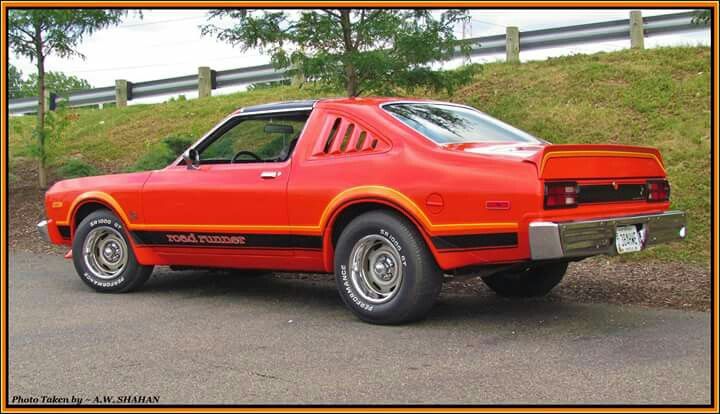
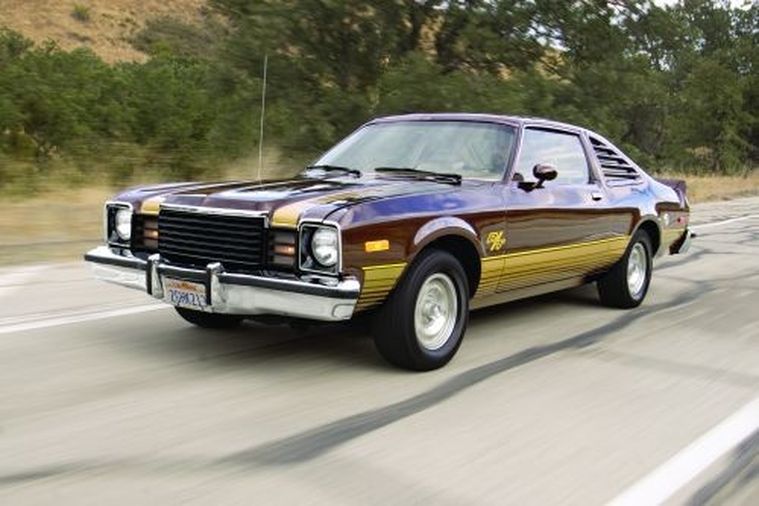
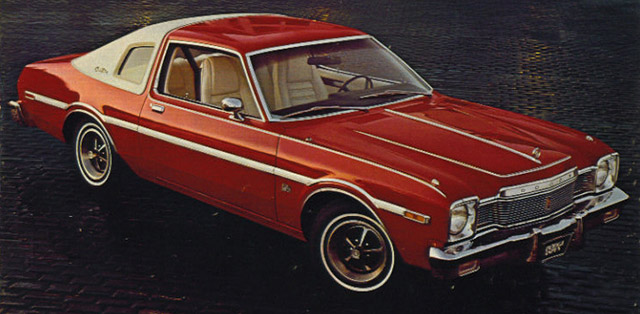
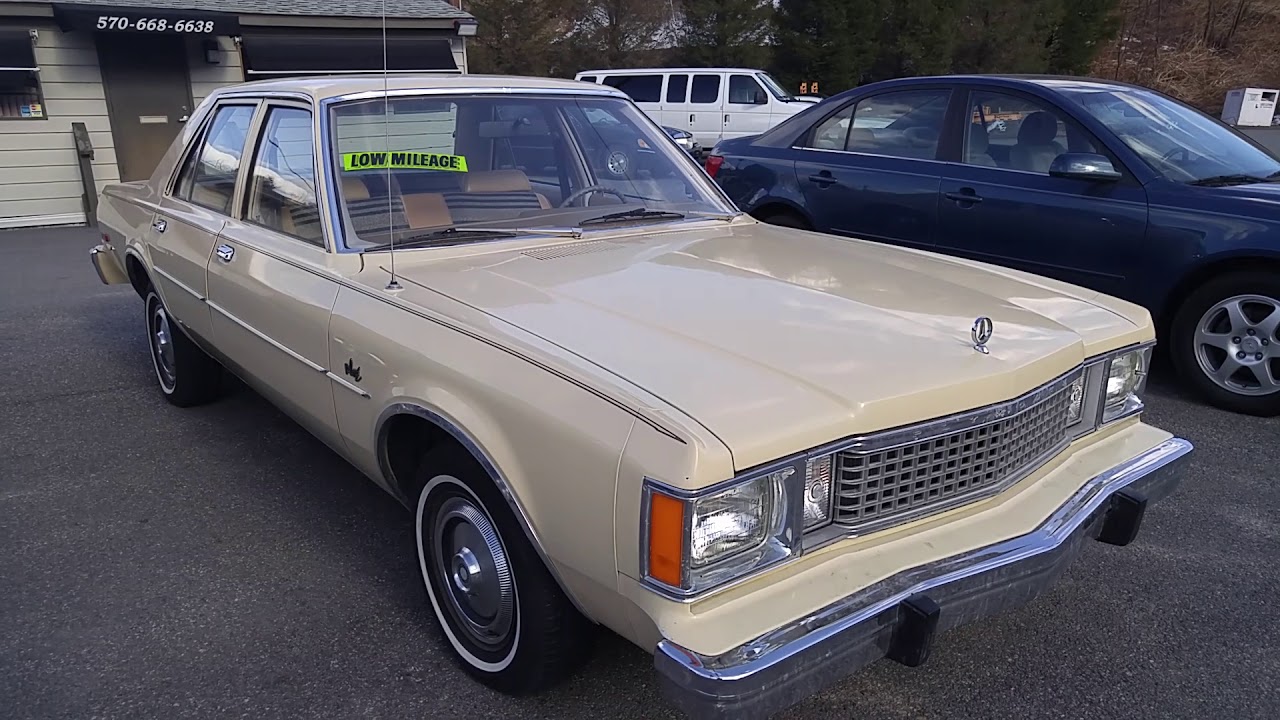
^^^1980 front end
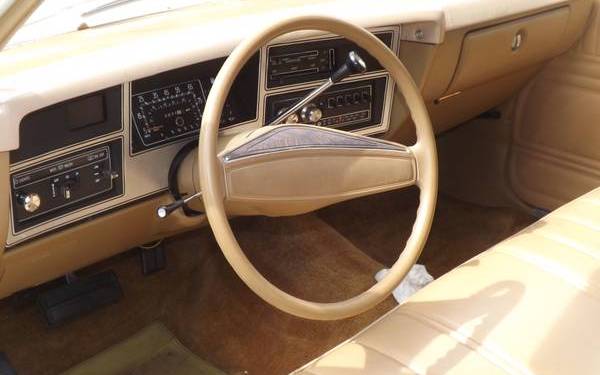
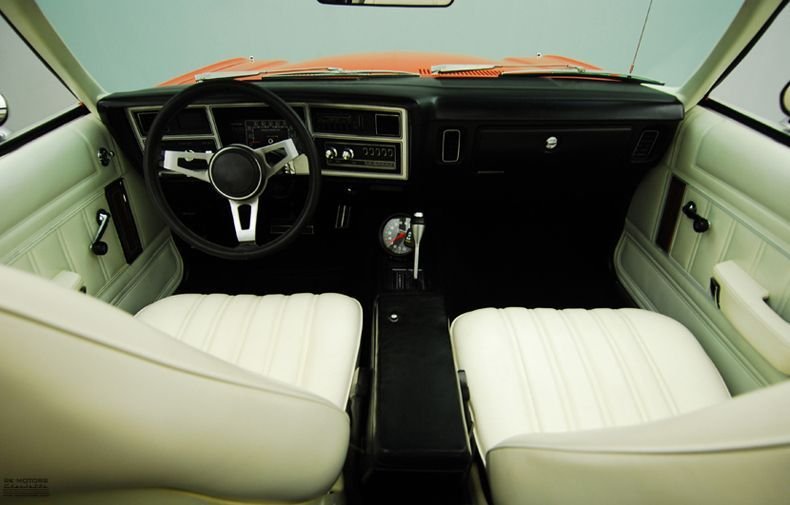
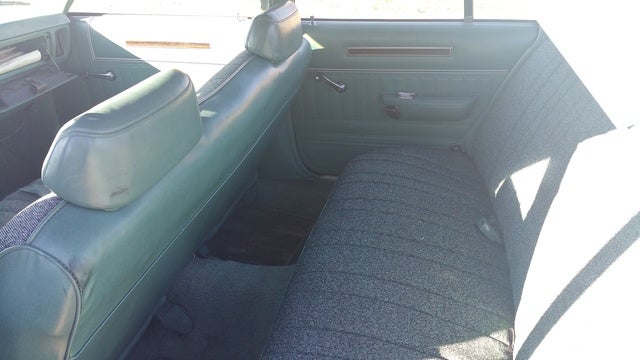
IN A NUTSHELL: Like-Father does not always mean Like-Son.
Although there were exceptions like the high-performance Dart Swinger 340 and Duster/Demon 340, in general, the well-respected line of Plymouth Valiants and Dodge Lancer/Darts, produced from 1960 to 1976, were a line of basic-transportation compacts that were not necessarily exciting cars to drive, but reliably got you where you were going with Slant-Six and small V8 engines and Torqueflite automatic transmissions that were virtually bulletproof. The cast-iron-block 3.7L, 225 c.i. Slant-Six engine (a few samples were built with aluminum blocks), in general, designed and produced to military standards, was arguably the most durable auto engine that had been built up to that time....mostly because the main bearings and crankshaft were significantly larger and more over-engineeed than necessary. The Slant-Six and Torqueflite was also the main choice for many taxicab companies that were not using the famous Chevy-powered Checker Marathon cabs....see my write-up on the Marathon. Despite my love for the big Buick I had in college, the Valiant, in particular, was the car I will always remember that, at age 16, actually introduced me to the world of driving....but that is the subject of another write-up.
But despite the fact that six-cylinder Valiants/Darts were Mr. Dependable in the powertrain department, particularly with the 3-speed Torqueflite A904 transmission, they were notably weak in several areas. These included Push-and-Pray non-power drum brakes that were simply too small/too fade-prone/too ineffective for the job (better and slightly larger front-disc/rear-drums became an option in the early 1970s), shoddy-fitted bodywork typical of Chrysler products, a sloppily-designed three-speed manual transmission that had poor synchronizers in second/third gear and no synchronizer at all for first gear, more road/tire noise sent into the cabin from the unibody structure and torsion/leaf suspension than their body-on-frame, coil-spring Ford Falcon/Maverick and Chevy Nova competitors, and indifferent fit/finish throughout.
So, after a decade and a half of production, the Chrysler planners decided that it was time to introduce an updated car, using the same dependable automatic drivetrain, with a more modern and comfortable body/interior/suspension. The result, of course, was the Plymouth Volare and Dodge Aspen, which were a little more comfortable to drive (when they actually ran correctly) than the previous Valiant/Dart had been, and had notably better brakes. The Volare/Aspens were also a little larger than the Valiant/Dart, and almost to what was then considered mid-sized length. Like the early Valiants/Lancers/Darts, Volares/Aspens were offered in sedan, coupe, and wagon body-styles.....Valiant/Dart wagons/convertibles had been dropped in 1967, but the Dart convertibles carried on for another couple of years. The Volare/Aspen was not offered as a convertible, as that body-style was dropping out of favor during that period due to safety-concerns. By this time, the world of new American muscle-cars had worsened drastically due to emissions/CAFE rules and rapidly-increasing insurance-premiums, but a performance-oriented Volare Road-Runner coupe version was built, with the cartoon/bird-graphics, Beep-Beep horn, and essentially the Police-Package 360-cubic-inch (5.9L) V8 and heavy-duty suspension/brakes. Dodge countered with a similar Aspen R/T performance coupe with the same mechanicals, minus the bird-graphics and horn.
The Volare/Aspen did offer a somewhat more comfortable ride than the Valiant-Dart. Chrysler, true to tradition, kept the torsion-bar suspension up front, and leaf springs in back, but used a new transverse-torsion-system (and anti-sway bar) that better-isolated the bars and noise-transmission, from the subframe and body structure. The mounting-points for the leaf springs in back were better-isolated. Better sealing was used for the doors and windows, as was glass that was more noise-absorbing. These changes generally worked (when they were assembled correctly), and the Volare/Aspen more closely approached the level of their Ford/GM competitors in ride-comfort, though Ford/Mercury was still known as the King of ultra-soft road manners. Like the previous line of Valiants/Darts, the 3.7L Slant-Six and small-block 5.2L V8 was offered in the non-performance versions of the Volare/Aspen, with the smaller 4.5L V8 and larger 5.6L V8 having been discontinued.....I won't go into the HP/torque ratings on these powerplants because, by this time, both were down substantially from what was the case before 1971. Power-wise, this was truly an era of Malaise....although the 1977-spec Super-Six twin-barrel wasn't that bad, as I'll get into later.
Only problem was......despite the fact that these cars were given Motor Trend Magazine's Car of the Year ward for 1976, they were designed and built in a Chrysler corporate system that, at the time, was rapidly falling apart, lacking co-ordination, sometimes steeped in corruption, and using desperately outdated plants (Chrysler would approach bankruptcy a few years later, right before Lee Iacocca stepped in). Quality-control at the plants was seriously lacking, these cars had been inadequately tested, the electrical systems were an unreliable mess, factory-workers were often indifferent or lax in discipline, management would usually not slow or stop the assembly lines even when the workers were doing their best and suggesting improvements, and the result, like with a number of GM and Chrysler products to come in the next decade, was simply a mess. These cars were often delivered in atrocious condition, with inadequate carburation, parts loose or falling off, major components that had to be replaced (more on that in a minute), and numerous annoying things that new-vehicle owners should not have to put up with at any price.
My family had several years' experience with a new Volare. In early 1977, my late father and mother decided, before it got too hot/humid (summer, here in the D.C. area, typically starts in late May), that it was time for her to get a new car...something with air-conditioning, as the older car she was driving did not have it. Heat and humidity did not seem to bother my Dad (he didn't even want A/C in the old Chrysler products he drove), but my Mom typically suffered from it. His health was starting to slip just a little (although he still had another decade or so to live)...but, even after Army retirement, he was still somewhat of a workaholic. He had me, with my experienced eye and ability to spot defects in a vehicle, actually go shopping with my Mom and help her on the deal. My Mom, at that time, was an experienced bookeeper/accountant, but knew little about a car's inner-workings. My Dad, at first, liked the idea of the new down-sized Chrysler Cordoba....actor Ricardo Montalban, at that time, was hyping the car in the well-known "Corinthian Leather" TV ads. The Cordoba had slightly smaller V8 engines than the typical big full-sized Chryslers of the period, got slightly better mileage, and was a little easier to park and maneuver. Dad liked the idea of special-ordering one from the factory exactly with the color/options my Mom wanted, but when my Mom actually went and looked at the car and sat in it, she didn't like the way that the Cordoba's coupe-roofline, rear-pillars, and the typical mid/late-70s peep-hole "opera" window affected rear-visibility...she said she wouldn't feel safe driving it. In fact, at the time, Volvo was emphasizing that in its ads.....no opera-windows on their cars, due to the inherent visibility-problems and Volvo's traditional emphasis on safety.
So, the Cordoba was out. I didn't particularly like the idea of a Volare or Aspen, as, by then, even in the days before the Internet and 24-hour media, stories about the high defect-level in those cars were already starting to make the press and Consumer Reports. But, my Dad, besides the Cordoba, also liked the idea of getting another Slant-Six (we had had previous family experience with that engine in several vehicles), and, of course, an automatic transmission and A/C for my Mom. My Mom also said that she had confidence in that engine, so we went back to the same local Chrysler/Plymouth dealership where I had bought my Slant-Six Duster brand-new a couple of years before, and she looked at a new Volare four-door sedan. No problems.....she loved the clear, widespread visibility from the low belt line, extra-large windows, high roofline, low trunk-lid, and things that you just don't see in today's jellybean sedans any more. Even though the front bench seat in the base-model version of the Volare left a lot to be desired (particularly with my Mom's less-than-perfect back/disc problems), I saw little reason to spend more money for the upper-trim version...its seats, though with more-plush upholstery, weren't that much better overall. Inflation, by then, was rampant in the U.S. economy, and new-car prices were jumping almost overnight....the Volare/Aspen was already marked up quite a bit over the previous Valiant/Dart. So, we picked out a nice wine/burgundy-red-metallic, base-level Volare 4-door sedan (Chrysler, like Ford, used good baked-Enamel paint in those days...better than the GM/AMC acrylic-lacquer crap which faded almost overnight). It had a cloth interior that was an odd shade of tannish/champagne color that my Mom didn't care for, but she liked the exterior color. It had the automatic and air-conditioning she needed, the optional two-barrel "Super-Six" carburation new that year that was supposed to address the stalling/stumbling and power-deficiency of the previous 1976 version, and an electric rear-window defroster. I looked it over and examined it carefully, inside and out, for defects (in those days, you HAD to look at new cars carefully). Though not perfect, it seemed somewhat better-assembled than a few other Volare/Aspens I had looked at both with and without my Mom, so, we gave it a test-drive. It drove much better than the single-barrel Slant-Six, I didn't see any glaring defects in it on the test-drive, and it seemed a little more comfortable, for reasons I explained above, than the previous Valiants/Darts, so, we went back into the dealership, and from there, on the negotiations, my Mom's good financial-skills took over....I was more a less a spectator on that part. She dealt directly with the dealership's owner, wasn't entirely satisfied with the deal (she never was, with any vehicle), and noted that the dealership promised to sell at invoice, but would not (or could not) actually show her the invoice, telling her to just trust them that she got it that way. Well, in the end, despite her doubts, she signed for it, and we took it home.
Though it was not as poorly-built as some other Volares and Aspens, the sample we took home was not without issues by any means. First, I spent probably the better part of an hour tightening up all of the exposed screw-heads on the interior and trim parts with a small Phiilips screwdriver...a number of them had not been well-tightened on the assembly line. Second, though the drivetrain was fine on the dealership test-drive, after a couple of days in use, I started to notice an increasing howling-noise in the rear end when one let up on the gas and it was coasting....my Dad commented about that, too. We drove it that way for a couple of weeks to see if it was something that would go away on its own (as some noises do), and, when it didn't, it was back to the dealership for a look. They had it several days, and when it came back, no more noise...quiet as a mouse. They had to replace the entire rear differential/live-rear-axle assembly...defective. We later learned, from a mechanic, that the differentials in some of these cars actually loosened and started to fall apart. Third, although this was sometime later on, after we had had the car for a couple of years, it suddenly quit running, with my Mom in it alone, a couple of miles from her house. Fortunately, she avoided an accident and was near a phone. That was in the days before manufacturer-provided Roadside Assistance, and she had to use her Allstate Motor Club benefits, which, of course, included towing. So, it was back to the dealership (I don't remember if this was warranty-covered or not) for what turned out to be another very common problem in these cars...defective ballast-resistors in the electrical system. There were also a couple of recalls, the details of which I don't remember, though not as many on the 1977 model we owned as with the previous 1976s.
The car also provided some good service as well. I used it once in a while in a carpool I was temporarily in at work, until that didn't work out for several reasons. I drove it here and there around town, helping my Mom when she either didn't feel like driving, was helping my Dad, or had some issues with her back. And, with my Mom (and me driving), I took probably the longest trip in a car I ever took in one day...more than 500 miles and 11 hours behind the wheel, across the mountains, from the D.C. area to my aunt/uncles's house near Cincinnati, Ohio. It was for Thanksgiving of 1977, and we ran into some snow near Cincinnatti (it was 19 degrees there, even in November), and I noticed that the Volare's RWD traction on snow was not as good as on previous Valiants I'd driven, although, by my standards, all else equal, (most) front-engined/RWD vehicles don't impress me as much in snow as FWD or AWD. On a slick surface, it was hard to keep from spinning the wheels on a start-up, as the throttle was somewhat jumpy. I don't remember if it had all season tires, or if those tires were radial or bias-ply, as radials, during the period, were starting to replace bias-ply tires as standard equipment.
The RWD Volare and Aspen remained in production through the 1980 model year, receiving a mild-restyling and front end for its last year of production. Chrysler, by 1981, was ready to introduce its new competitor to GM's hot-selling but poorly-built X-Body compacts...the K-body Plymouth Reliant and Dodge Aries. The Reliant/Aries were compact-sized, and one step up from the FWD-transverse-engine subcompact Plymouth Horizon/Dodge Omni subcompacts, with VW-sourced four-cylinder engines, that Chrysler had introduced a few years before, in 1978. The Reliant/Aries was offered in 2 or 4-door sedan and wagon versions. Like GM's X-bodies, they were specifically designed to shed weight, be space-efficient, and get good mileage. Ford would follow, in the fall of 1983, for the 1984 model year, with its compact Ford Tempo/ Mercury Topaz sedans. The new K-body Reliants/Aries got better mileage than the older Volare-Aspen, but were made mostly from light, ultra-cheap materials and had substandard bodywork. However. they were at least a couple of steps above GM's X-bodies in having fewer assembly-line defects, safer brakes, and somewhat better engineering overall.
I also have experience in K-car ownership, but I'll save that for another write-up.
And, as Always, Happy Car-Memories.

MM
__________________

DRIVING IS BELIEVING








^^^1980 front end


IN A NUTSHELL: Like-Father does not always mean Like-Son.
Although there were exceptions like the high-performance Dart Swinger 340 and Duster/Demon 340, in general, the well-respected line of Plymouth Valiants and Dodge Lancer/Darts, produced from 1960 to 1976, were a line of basic-transportation compacts that were not necessarily exciting cars to drive, but reliably got you where you were going with Slant-Six and small V8 engines and Torqueflite automatic transmissions that were virtually bulletproof. The cast-iron-block 3.7L, 225 c.i. Slant-Six engine (a few samples were built with aluminum blocks), in general, designed and produced to military standards, was arguably the most durable auto engine that had been built up to that time....mostly because the main bearings and crankshaft were significantly larger and more over-engineeed than necessary. The Slant-Six and Torqueflite was also the main choice for many taxicab companies that were not using the famous Chevy-powered Checker Marathon cabs....see my write-up on the Marathon. Despite my love for the big Buick I had in college, the Valiant, in particular, was the car I will always remember that, at age 16, actually introduced me to the world of driving....but that is the subject of another write-up.
But despite the fact that six-cylinder Valiants/Darts were Mr. Dependable in the powertrain department, particularly with the 3-speed Torqueflite A904 transmission, they were notably weak in several areas. These included Push-and-Pray non-power drum brakes that were simply too small/too fade-prone/too ineffective for the job (better and slightly larger front-disc/rear-drums became an option in the early 1970s), shoddy-fitted bodywork typical of Chrysler products, a sloppily-designed three-speed manual transmission that had poor synchronizers in second/third gear and no synchronizer at all for first gear, more road/tire noise sent into the cabin from the unibody structure and torsion/leaf suspension than their body-on-frame, coil-spring Ford Falcon/Maverick and Chevy Nova competitors, and indifferent fit/finish throughout.
So, after a decade and a half of production, the Chrysler planners decided that it was time to introduce an updated car, using the same dependable automatic drivetrain, with a more modern and comfortable body/interior/suspension. The result, of course, was the Plymouth Volare and Dodge Aspen, which were a little more comfortable to drive (when they actually ran correctly) than the previous Valiant/Dart had been, and had notably better brakes. The Volare/Aspens were also a little larger than the Valiant/Dart, and almost to what was then considered mid-sized length. Like the early Valiants/Lancers/Darts, Volares/Aspens were offered in sedan, coupe, and wagon body-styles.....Valiant/Dart wagons/convertibles had been dropped in 1967, but the Dart convertibles carried on for another couple of years. The Volare/Aspen was not offered as a convertible, as that body-style was dropping out of favor during that period due to safety-concerns. By this time, the world of new American muscle-cars had worsened drastically due to emissions/CAFE rules and rapidly-increasing insurance-premiums, but a performance-oriented Volare Road-Runner coupe version was built, with the cartoon/bird-graphics, Beep-Beep horn, and essentially the Police-Package 360-cubic-inch (5.9L) V8 and heavy-duty suspension/brakes. Dodge countered with a similar Aspen R/T performance coupe with the same mechanicals, minus the bird-graphics and horn.
The Volare/Aspen did offer a somewhat more comfortable ride than the Valiant-Dart. Chrysler, true to tradition, kept the torsion-bar suspension up front, and leaf springs in back, but used a new transverse-torsion-system (and anti-sway bar) that better-isolated the bars and noise-transmission, from the subframe and body structure. The mounting-points for the leaf springs in back were better-isolated. Better sealing was used for the doors and windows, as was glass that was more noise-absorbing. These changes generally worked (when they were assembled correctly), and the Volare/Aspen more closely approached the level of their Ford/GM competitors in ride-comfort, though Ford/Mercury was still known as the King of ultra-soft road manners. Like the previous line of Valiants/Darts, the 3.7L Slant-Six and small-block 5.2L V8 was offered in the non-performance versions of the Volare/Aspen, with the smaller 4.5L V8 and larger 5.6L V8 having been discontinued.....I won't go into the HP/torque ratings on these powerplants because, by this time, both were down substantially from what was the case before 1971. Power-wise, this was truly an era of Malaise....although the 1977-spec Super-Six twin-barrel wasn't that bad, as I'll get into later.
Only problem was......despite the fact that these cars were given Motor Trend Magazine's Car of the Year ward for 1976, they were designed and built in a Chrysler corporate system that, at the time, was rapidly falling apart, lacking co-ordination, sometimes steeped in corruption, and using desperately outdated plants (Chrysler would approach bankruptcy a few years later, right before Lee Iacocca stepped in). Quality-control at the plants was seriously lacking, these cars had been inadequately tested, the electrical systems were an unreliable mess, factory-workers were often indifferent or lax in discipline, management would usually not slow or stop the assembly lines even when the workers were doing their best and suggesting improvements, and the result, like with a number of GM and Chrysler products to come in the next decade, was simply a mess. These cars were often delivered in atrocious condition, with inadequate carburation, parts loose or falling off, major components that had to be replaced (more on that in a minute), and numerous annoying things that new-vehicle owners should not have to put up with at any price.
My family had several years' experience with a new Volare. In early 1977, my late father and mother decided, before it got too hot/humid (summer, here in the D.C. area, typically starts in late May), that it was time for her to get a new car...something with air-conditioning, as the older car she was driving did not have it. Heat and humidity did not seem to bother my Dad (he didn't even want A/C in the old Chrysler products he drove), but my Mom typically suffered from it. His health was starting to slip just a little (although he still had another decade or so to live)...but, even after Army retirement, he was still somewhat of a workaholic. He had me, with my experienced eye and ability to spot defects in a vehicle, actually go shopping with my Mom and help her on the deal. My Mom, at that time, was an experienced bookeeper/accountant, but knew little about a car's inner-workings. My Dad, at first, liked the idea of the new down-sized Chrysler Cordoba....actor Ricardo Montalban, at that time, was hyping the car in the well-known "Corinthian Leather" TV ads. The Cordoba had slightly smaller V8 engines than the typical big full-sized Chryslers of the period, got slightly better mileage, and was a little easier to park and maneuver. Dad liked the idea of special-ordering one from the factory exactly with the color/options my Mom wanted, but when my Mom actually went and looked at the car and sat in it, she didn't like the way that the Cordoba's coupe-roofline, rear-pillars, and the typical mid/late-70s peep-hole "opera" window affected rear-visibility...she said she wouldn't feel safe driving it. In fact, at the time, Volvo was emphasizing that in its ads.....no opera-windows on their cars, due to the inherent visibility-problems and Volvo's traditional emphasis on safety.
So, the Cordoba was out. I didn't particularly like the idea of a Volare or Aspen, as, by then, even in the days before the Internet and 24-hour media, stories about the high defect-level in those cars were already starting to make the press and Consumer Reports. But, my Dad, besides the Cordoba, also liked the idea of getting another Slant-Six (we had had previous family experience with that engine in several vehicles), and, of course, an automatic transmission and A/C for my Mom. My Mom also said that she had confidence in that engine, so we went back to the same local Chrysler/Plymouth dealership where I had bought my Slant-Six Duster brand-new a couple of years before, and she looked at a new Volare four-door sedan. No problems.....she loved the clear, widespread visibility from the low belt line, extra-large windows, high roofline, low trunk-lid, and things that you just don't see in today's jellybean sedans any more. Even though the front bench seat in the base-model version of the Volare left a lot to be desired (particularly with my Mom's less-than-perfect back/disc problems), I saw little reason to spend more money for the upper-trim version...its seats, though with more-plush upholstery, weren't that much better overall. Inflation, by then, was rampant in the U.S. economy, and new-car prices were jumping almost overnight....the Volare/Aspen was already marked up quite a bit over the previous Valiant/Dart. So, we picked out a nice wine/burgundy-red-metallic, base-level Volare 4-door sedan (Chrysler, like Ford, used good baked-Enamel paint in those days...better than the GM/AMC acrylic-lacquer crap which faded almost overnight). It had a cloth interior that was an odd shade of tannish/champagne color that my Mom didn't care for, but she liked the exterior color. It had the automatic and air-conditioning she needed, the optional two-barrel "Super-Six" carburation new that year that was supposed to address the stalling/stumbling and power-deficiency of the previous 1976 version, and an electric rear-window defroster. I looked it over and examined it carefully, inside and out, for defects (in those days, you HAD to look at new cars carefully). Though not perfect, it seemed somewhat better-assembled than a few other Volare/Aspens I had looked at both with and without my Mom, so, we gave it a test-drive. It drove much better than the single-barrel Slant-Six, I didn't see any glaring defects in it on the test-drive, and it seemed a little more comfortable, for reasons I explained above, than the previous Valiants/Darts, so, we went back into the dealership, and from there, on the negotiations, my Mom's good financial-skills took over....I was more a less a spectator on that part. She dealt directly with the dealership's owner, wasn't entirely satisfied with the deal (she never was, with any vehicle), and noted that the dealership promised to sell at invoice, but would not (or could not) actually show her the invoice, telling her to just trust them that she got it that way. Well, in the end, despite her doubts, she signed for it, and we took it home.
Though it was not as poorly-built as some other Volares and Aspens, the sample we took home was not without issues by any means. First, I spent probably the better part of an hour tightening up all of the exposed screw-heads on the interior and trim parts with a small Phiilips screwdriver...a number of them had not been well-tightened on the assembly line. Second, though the drivetrain was fine on the dealership test-drive, after a couple of days in use, I started to notice an increasing howling-noise in the rear end when one let up on the gas and it was coasting....my Dad commented about that, too. We drove it that way for a couple of weeks to see if it was something that would go away on its own (as some noises do), and, when it didn't, it was back to the dealership for a look. They had it several days, and when it came back, no more noise...quiet as a mouse. They had to replace the entire rear differential/live-rear-axle assembly...defective. We later learned, from a mechanic, that the differentials in some of these cars actually loosened and started to fall apart. Third, although this was sometime later on, after we had had the car for a couple of years, it suddenly quit running, with my Mom in it alone, a couple of miles from her house. Fortunately, she avoided an accident and was near a phone. That was in the days before manufacturer-provided Roadside Assistance, and she had to use her Allstate Motor Club benefits, which, of course, included towing. So, it was back to the dealership (I don't remember if this was warranty-covered or not) for what turned out to be another very common problem in these cars...defective ballast-resistors in the electrical system. There were also a couple of recalls, the details of which I don't remember, though not as many on the 1977 model we owned as with the previous 1976s.
The car also provided some good service as well. I used it once in a while in a carpool I was temporarily in at work, until that didn't work out for several reasons. I drove it here and there around town, helping my Mom when she either didn't feel like driving, was helping my Dad, or had some issues with her back. And, with my Mom (and me driving), I took probably the longest trip in a car I ever took in one day...more than 500 miles and 11 hours behind the wheel, across the mountains, from the D.C. area to my aunt/uncles's house near Cincinnati, Ohio. It was for Thanksgiving of 1977, and we ran into some snow near Cincinnatti (it was 19 degrees there, even in November), and I noticed that the Volare's RWD traction on snow was not as good as on previous Valiants I'd driven, although, by my standards, all else equal, (most) front-engined/RWD vehicles don't impress me as much in snow as FWD or AWD. On a slick surface, it was hard to keep from spinning the wheels on a start-up, as the throttle was somewhat jumpy. I don't remember if it had all season tires, or if those tires were radial or bias-ply, as radials, during the period, were starting to replace bias-ply tires as standard equipment.
The RWD Volare and Aspen remained in production through the 1980 model year, receiving a mild-restyling and front end for its last year of production. Chrysler, by 1981, was ready to introduce its new competitor to GM's hot-selling but poorly-built X-Body compacts...the K-body Plymouth Reliant and Dodge Aries. The Reliant/Aries were compact-sized, and one step up from the FWD-transverse-engine subcompact Plymouth Horizon/Dodge Omni subcompacts, with VW-sourced four-cylinder engines, that Chrysler had introduced a few years before, in 1978. The Reliant/Aries was offered in 2 or 4-door sedan and wagon versions. Like GM's X-bodies, they were specifically designed to shed weight, be space-efficient, and get good mileage. Ford would follow, in the fall of 1983, for the 1984 model year, with its compact Ford Tempo/ Mercury Topaz sedans. The new K-body Reliants/Aries got better mileage than the older Volare-Aspen, but were made mostly from light, ultra-cheap materials and had substandard bodywork. However. they were at least a couple of steps above GM's X-bodies in having fewer assembly-line defects, safer brakes, and somewhat better engineering overall.
I also have experience in K-car ownership, but I'll save that for another write-up.
And, as Always, Happy Car-Memories.

MM
__________________

DRIVING IS BELIEVING

